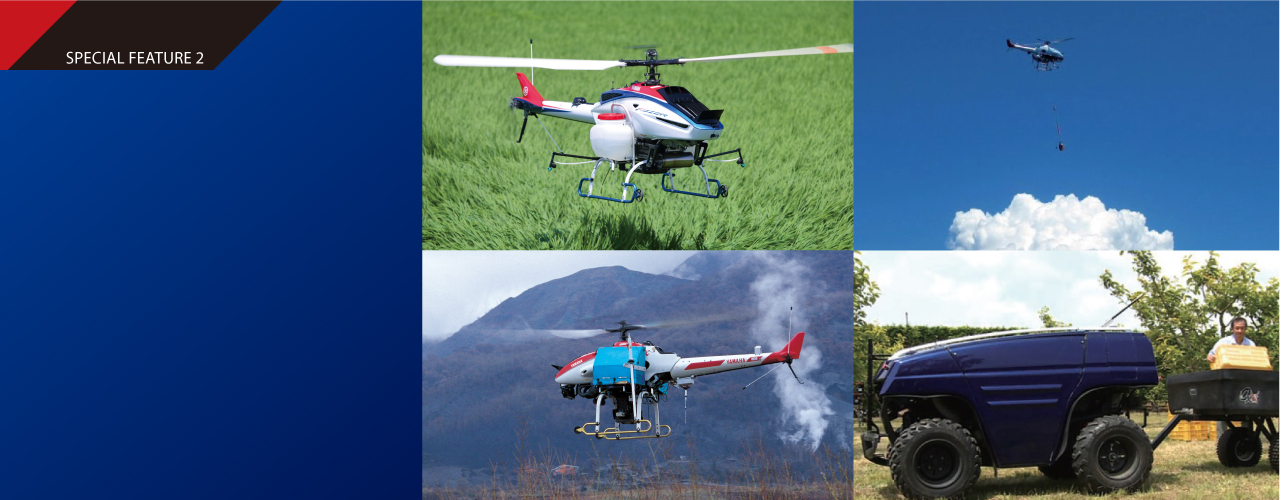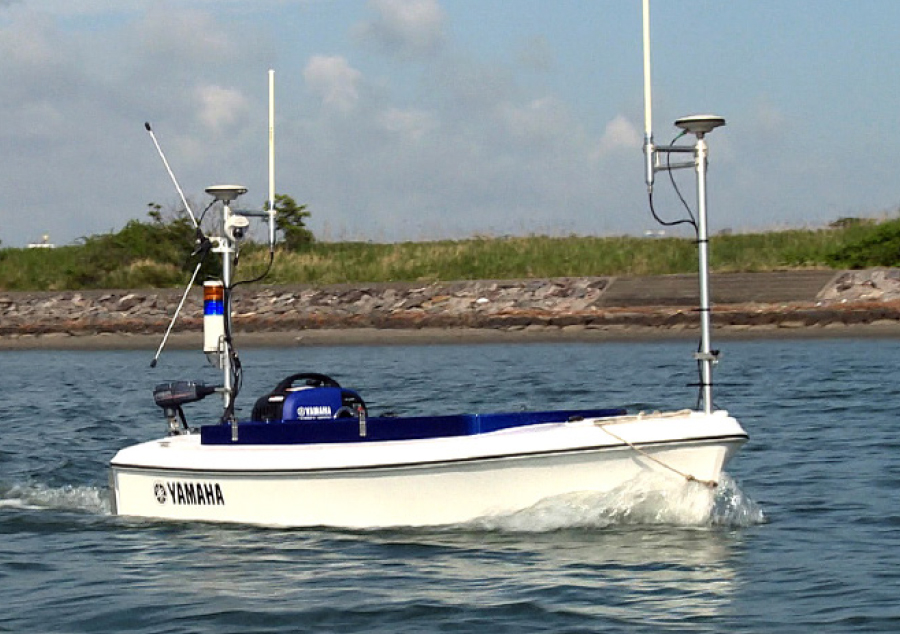Special Feature 2 - Annual Report 2016
Evolution of Yamaha Motor's industrial-use unmmaned helicopters

Expanding the Solutions Business
Spread of industrial-use unmanned helicopters has unlimited possibilities
In 1987, Yamaha Motor successfully introduced its industrial-use unmanned helicopters. Today, their uses include pest control for agricultural products, monitoring and observation of disaster areas, and scientific investigation. In 2016, we also developed an unmanned compact electric survey craft, expanding our fields of activity to the air, water, and land.
Using industrial-use unmanned helicopters to support Japan’s farmers
With the aging population and labor shortage in Japan’s agricultural industry, Yamaha’s industrial-use unmanned helicopters have become an indispensable solution for rice cultivation. Depending on the type of field, one helicopter can spread pesticide over one hectare of rice paddies in approximately five minutes. This has led to a significant reduction in labor compared with the 60 minutes required for the same task using a tractor and 160 minutes required using a motorized hand sprayer. Another reason for their growing popularity is that they spread less pesticide on areas around the field.
To raise agricultural productivity even further, we are creating integrated rice cultivation systems that use industrial-use unmanned helicopters for a variety of tasks including planting, fertilizing, and spraying, for significant increases in productivity and cost reductions.
In addition to product development, we are also focusing on building pilot training systems and maintenance structures to ensure that these products can be operated safely, with no problems or accidents. By way of a business model that combines both tangible and intangible components, industrial-use unmanned helicopters are now used in roughly 42.5% of the rice fields that provide Japan’s main food.

Expanding the fields of use, and technological applications for industrial-use unmanned helicopters
Uses for industrial-use unmanned helicopters are not limited to rice cultivation. Through tie-ups with national and prefectural governments and agricultural cooperatives and other organizations, their use is expanding to the cultivation of major grains such as wheat and soy, as well as vegetables and citrus fruits.
They also have numerous uses outside of agriculture. Fitted with automated driving systems, cameras, and monitors, industrial-use unmanned helicopters are being increasingly used in areas where people are prohibited from entering such as those near volcanic activity, those that have been damaged by earthquakes or typhoons, and those that are contaminated by radiation. Our latest model, the FAZER R G2, can carry up to 35kg and fly as far as 90km at heights of up to 2,800m (when used with a telecommunications satellite), and with diverse applications including photography, investigation and monitoring as well as the transport, unloading and collection of packages, its areas of use continue to expand.
The overseas business is growing as well with the start of commercial spraying at vineyards in California in 2017. We also have businesses in South Korea and Australia, and are considering business expansion for various uses in New Zealand, Thailand, and in Europe.
In addition, we recently began applying the technologies for our industrial-use unmanned helicopters developed over the more than 30 years, to uses on water. The BREEZE10, an autonomous unmanned compact electric survey craft that we developed in 2016, is being used to assist with the measurement of sedimentation in dams, helping to extend their operating life. We will continue to explore ways to support operations in areas including monitoring and security going forward.
